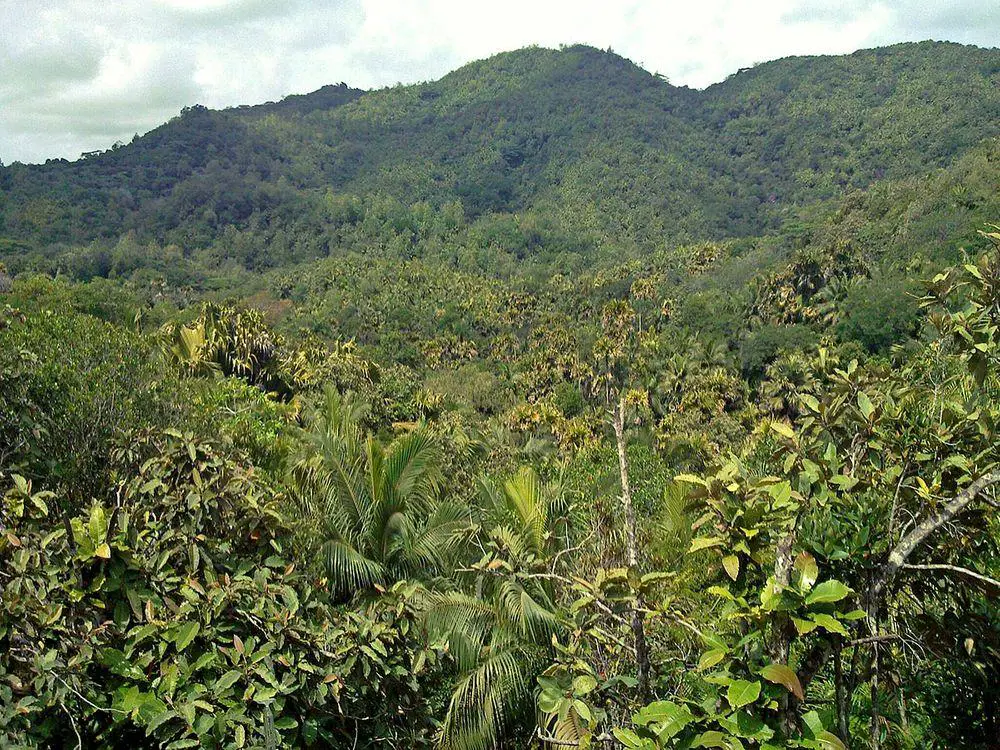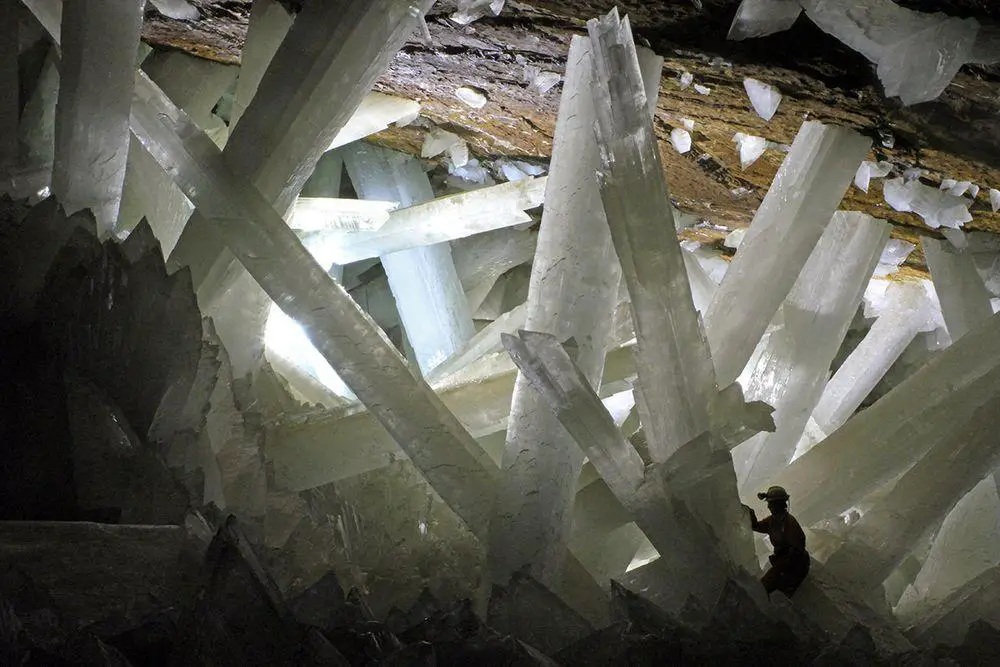 In short
In short
The palm forest in Vallée de Mai (Vallee de Mai) is a descendant of the primeval forest of Gondwana continent. Here live numerous plants and animals which are found only on granitic islands of Seychelles. The most exclusive plant here is coco de mer palm (Lodoicea maldivica) with the largest seeds in the world.
 52.3%
52.3%
GPS coordinates
Location, address
Alternate name
Area
Dominating species
UNESCO World Heritage status
Map of the site
If you see this after your page is loaded completely, leafletJS files are missing.
 In detail
In detail
Messenger from the times of Gondwana
Vallee de Mai is a valley in the central part of Praslin island – one of the unique granitic islands of Seychelles. Praslin and other nearby islands are the only mid-oceanic granitic islands in the world.
Non-specialists might not know this – but in geology the words "granite" and "ocean" are almost opposites. To say it simply – the ocean ends and continents start with granite.
Today geologists consider that the granitic islands of Seychelles are random shards of the former Gondwana continent, which were left in the ocean by Madagascar, which departed from India some 70 – 60 million years ago.
Next coincidence – climate on Seychelles did not change too much over these millions of years. All the Gondwanan life on these islands evolved on its own, with occasional species arriving across the ocean.
As a result today on Vallee de Mai has survived a unique, primitive ecosystem, a messenger from the times, when dinosaurs were still alive.
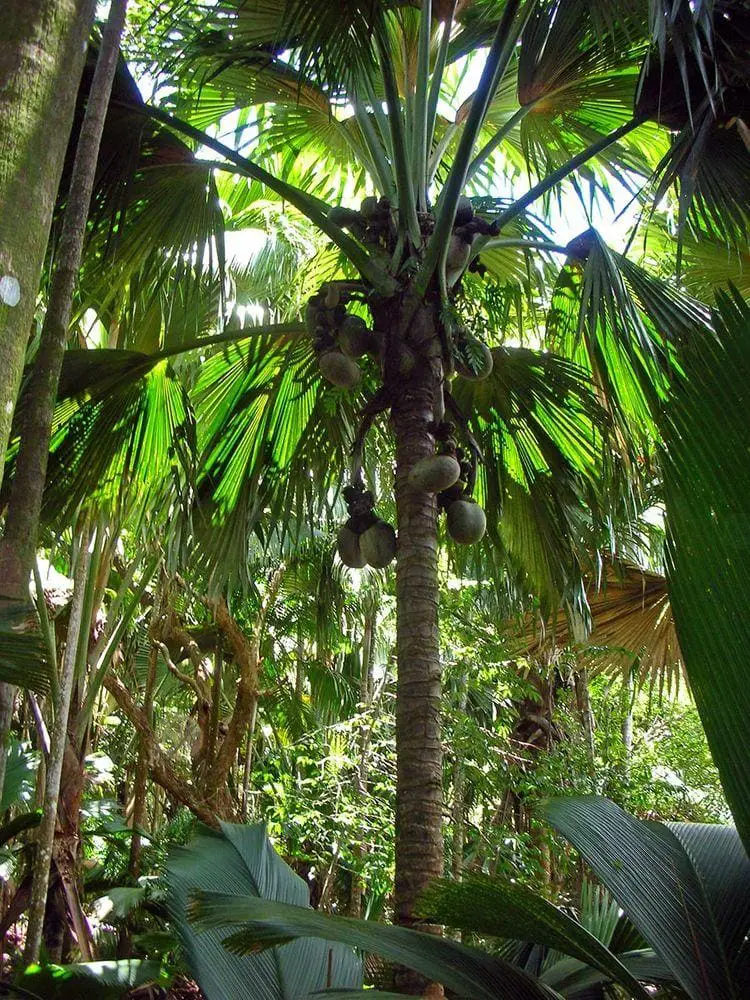
Protected palm forest
Vallee de Mai is unique ecosystem (19.5 ha) with numerous endemic species of plants and animals, this ecosystem lives by its specific rules and processes. Here are found 28 endemic plant species (e.g. found only in granitic Seychelles), many endemic animals, birds, reptiles and other life forms.
Vallee de Mai was left intact until the 1930s, when a private owner decided to "beautify" this forest. He started to cut local plants and introduced foreign decorative plants, coffee and other plants.
Happily he did not manage to "beautify" everything – in 1945 the government managed to get control over this unique area. Today it takes a lot of effort to remove the introduced plants, it is possible that they can be blamed for several extinctions. This ecosystem still is endangered by the introduced plants and animals, such as tenrecs (Tenrec ecaudatus).
A national park was established here in 1966 and since 1983 Vallee de Mai is UNESCO World Heritage monument.
Vallee de Mai is unusual palm forest of high scenic beauty. Fond B’Offay flows through the area, here is found one waterfall as well.
Several nature trails lead through the forest – tourists can visit this valley but it is strictly forbidden to smoke, to leave garbage or to take anything from the forest.
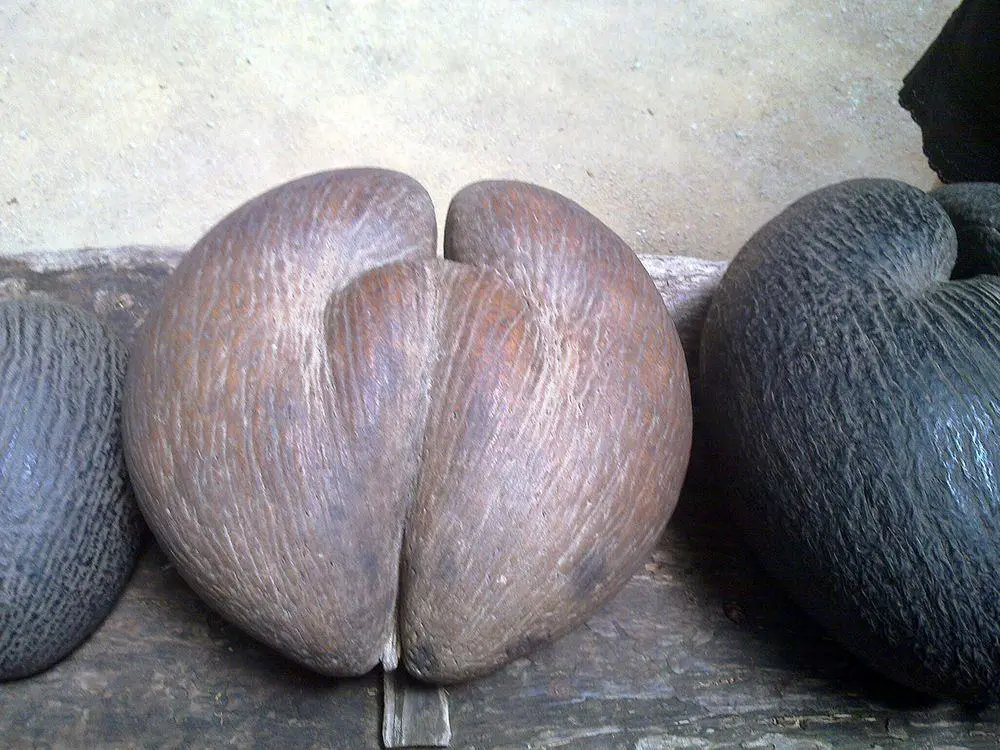
Coco de mer
The most famous local plant is Coco de Mer palm (Lodoicea maldivica) with the largest seeds and fruits in the world, these nuts are up to 42 kg heavy.
These unusual nuts were discovered much earlier than the palms. Currents brought nuts across the ocean and people found these weird nuts on the beaches. Malay people considered that these nuts grow in legendary underwater forests, nuts were very expensive and people attributed miraculous properties to them.
Only in the middle of the 18th century it was discovered that these nuts grow in Seychelles. But nevertheless, new legends appeared.
Thus in 1881 one of the best army officers in British colonies – Charles George Gordon – visited Seychelles to estimate the costs of possible fortifications in Mahé island. He saw Vallee de Mai with its giant palms and was inspired that much, that published a "proof" that this valley is the Garden of Eden and the palm is the tree of knowledge. He had a theory that this once was paradise which was almost totally covered with water when the glacial ice melted.
Local people used these palms in households until the first half of the 20th century – trunks and leaves for house building, young nuts – as food, and hollowed large nuts as vessels for household needs.
Originally this palm was growing on several granitic islands, but its population has decreased and today it is found only on Praslin and Curieuse islands, in six locations. Vallée de Mai is the only natural forest of these palms, it is estimated that in Vallée de Mai grow 1,440 palms out of a total of 8,282 palms. (1)
These palms grow up to 34 m tall, with up to 14 m long and 6 m wide leaves. Trees might be 200 – 400 years old, palms are very stable and with all their heavy fruits resist to strong winds.
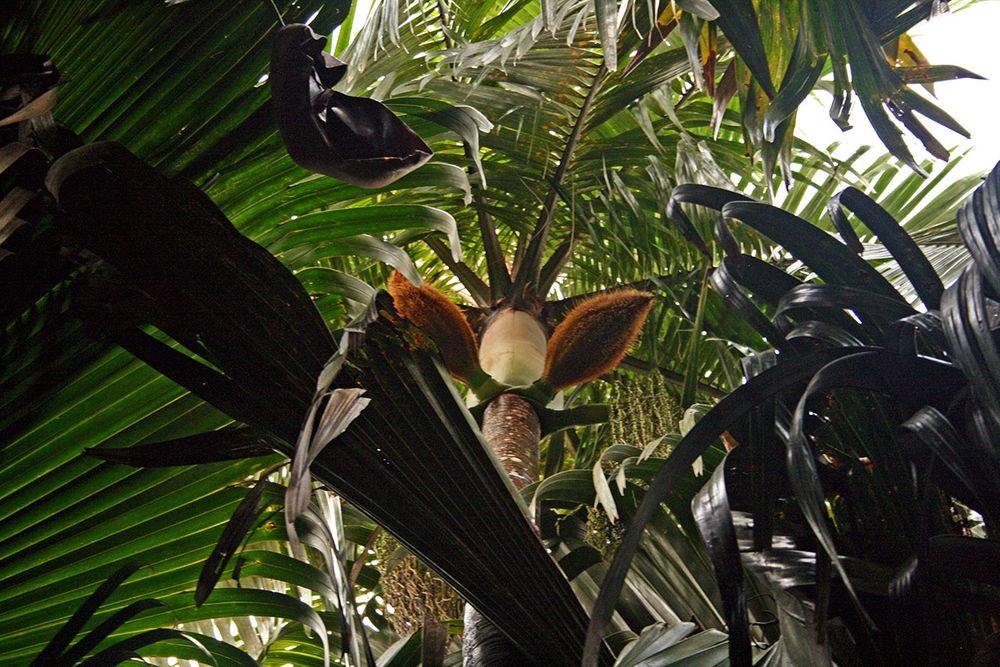
Other endemic plants
In total 28 species of plants in Vallée de Mai are endemic, found only on granitic islands of Seychelles.
Besides coco de mer here grow five other endemic palms – Vallée de Mai is the only place where all these palms grow together. All the endemic palms of this forest are the only species in their respective genus, e.g. they represent a unique lineage in the development of plants:
- Millionaire’s salat (Deckenia nobilis). Found on Praslin and other Seychelle granitic islands. This palm can grow up to 40 m tall. The peculiar name comes from the fact that the core of palm is edible but its extraction kills this rare plant.
- Latanier millepattes (Nephrosperma vanhoutteanum). Widespread on other Seychelle granitic islands as well.
- Thief palm (Phoenicophorium borsigianum). Also widespread on all other Seychelle granitic islands. Leaves of this palm are used for roofing.
- Latanier palm (Roscheria melanochaetes). 5 – 8 m tall palm. Found only on Mahé, Praslin and Silhouette islands.
- Seychelles stilt palm (Verschaffeltia splendida). Found only on Mahé, Silhouette and Praslin.
Some other plants endemic to Seychelles and found in Vallee de Mai are:
- Costularia hornei or Lophoschoenus hornei – found on four granitic islands: Mahé, Silhouette, Praslin and Curieuse.
- Dillenia ferruginea – up to 20 m tall tree with edible fruits, found on several granitic islands.
- Drypetes riseleyi – found on Mahé, Praslin and Silhouette. Less than 50 trees remain, some could be located also in Vallee de Mai. Grows up to 20 m tall.
- Erythroxylum sechellarum – up to 8 m tall tree or shrub, found on eight granitic islands.
- Hypoxidia rhizophylla – interesting herb with star-shaped flower in yellow – brown color.
- Horne’s pandanus (Martellidendron hornei or Pandanus hornei) – found on five granitic islands in Seychelles. Earlier was very common in moist forests, now increasingly rare.
- Memecylon elaeagni – variable, up to 8 m tall shrub or tree, grows on seven granitic islands.
- Northia hornei – rare tree, grows on five granitic islands.
- Pandanus multispicatus – this pandanus grows in six granitic islands, on rocky outcrops.
- Seychelles pandanus (Pandanus sechellarum) – a species of pandanus found on six granitic islands.
- Secamone schimperiana – this wine is found only on Mahé, Praslin and Curieuse islands.
- Syzygium wrightii (also Eugenia wrightii) – a tree, found on seven granitic islands.
- Thorachostachyum floribundum (also Mapanea floribundum) – a sedge which grows in more open spaces.
- Vanilla phalaenopsis – orchid, found only on four granitic islands.
Unique species of fauna
Similar to plants, numerous species of birds, reptiles, amphibians and other animals are found only in Seychelles. Some of these species are listed below:
Mammals
- Seychelles sheath-tailed bat (Coleura seychellensis) – very rare bat, may be less than 100 bats survive on four islands – Silhouette, Mahé, Praslin and La Digue.
Birds
- Seychelles Blue-pigeon (Alectroenas pulcherrima) – endemic pigeon, met only in the woodlands of the larger granitic islands.
- Seychelles Swiftlet (Collocalia elaphra) – this swiftlet breeds only in three places on Mahé, Praslin and La Digue islands – and lately it could be only on Praslin island.
- Seychelles Black parrot (Coracopsis nigra barklyi) – approximately 30 cm long, grey-brown parrot. It basically breeds only in Vallée de Mai and nearby Curieuse island.
- Seychelles Kestrel (Falco araea) – very rare predator bird. Although most of remaining birds live in Mahé, some pairs could still be living in Praslin.
- Seychelles Bulbul (Hypsipetes crassirostris) – lives on several granitic islands of Seychelles.
- Seychelles Sunbird (Nectarinia dussumieri) – widespread bird in granitic islands of Seychelles.
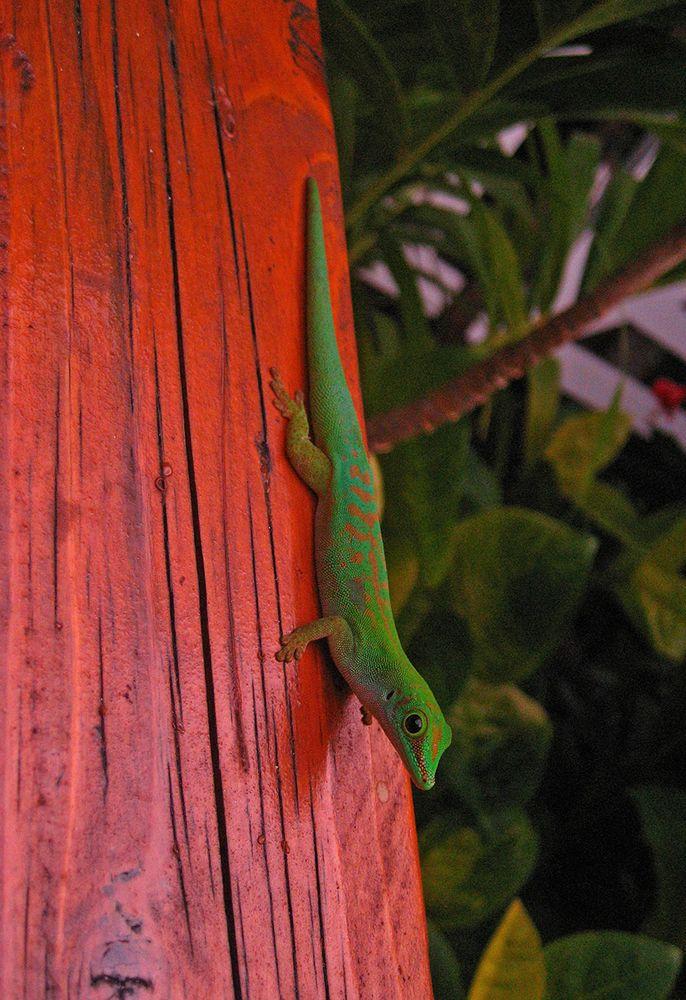
Reptiles
Some endemic lizards seem to be important for local plant life – for example, day geckos slowly walk over the flowers of coco de mer, pollinating them.
- Seychelles Bronze Gecko (Ailuronyx seychellensis) – lives on five granitic islands, population most likely exceeds 9,000 lizards.
- Dwarf Bronze Gecko (Ailuronyx tachyscopaeus) – lives on five granitic islands.
- Giant Bronze Gecko (Ailuronyx trachygaster) – very rare lizard, lives only in Praslin and Silhouette islands. It is estimated that some 3,400 animals remain. This lizard feeds on nectar and pollen of coco de mer palm.
- Tiger Chameleon (Chamaleo tigris) – beautiful chameleon.
- Seychelles House Snake (Lamprophis geometricus) – harmless, rare nocturnal snake, lives on several granitic islands.
- Seychelles Wolf Snake (Lycognathophis seychellensis) – rather rare snake, up to 1.2 m long, lives on six granitic islands.
- Gardiner’s Burrowing Skink (Pamelaescincus gardineri) – the only species in genus, lives on eight granitic islands.
- Seychelles Small Day Gecko (Phelsuma astriata astriata) – rather common lizard.
- Seychelles Giant Day Gecko (Phelsuma sundbergi) – common lizard on the granitic islands in Seychelles. In Praslin lives subspecies Phelsuma sundbergi sundbergi and visitors to the forest most likely will see it slowly enjoying the flowers of coco de mer palm.
- Seychelles Skink (Trachylepis seychellensis) – common local lizard.
- Seychelles Sucker-tailed Gecko (Urocotyledon inexpectata) – another common local lizard.
Amphibians
- Grandisonia alternans – caecilian (wormlike amphibian), widespread on Seychelles granitic islands.
- Grandisonia larvata – caecilian, widespread on six granitic islands.
- Grandisonia sechellensis – another caecilian, found in Mahé, Praslin and Silhouette.
- Hypogeophis rostratus – common caecilian in Seychelles.
- Tachycnemis seychellensis – tree frog, found in three largest granitic islands.
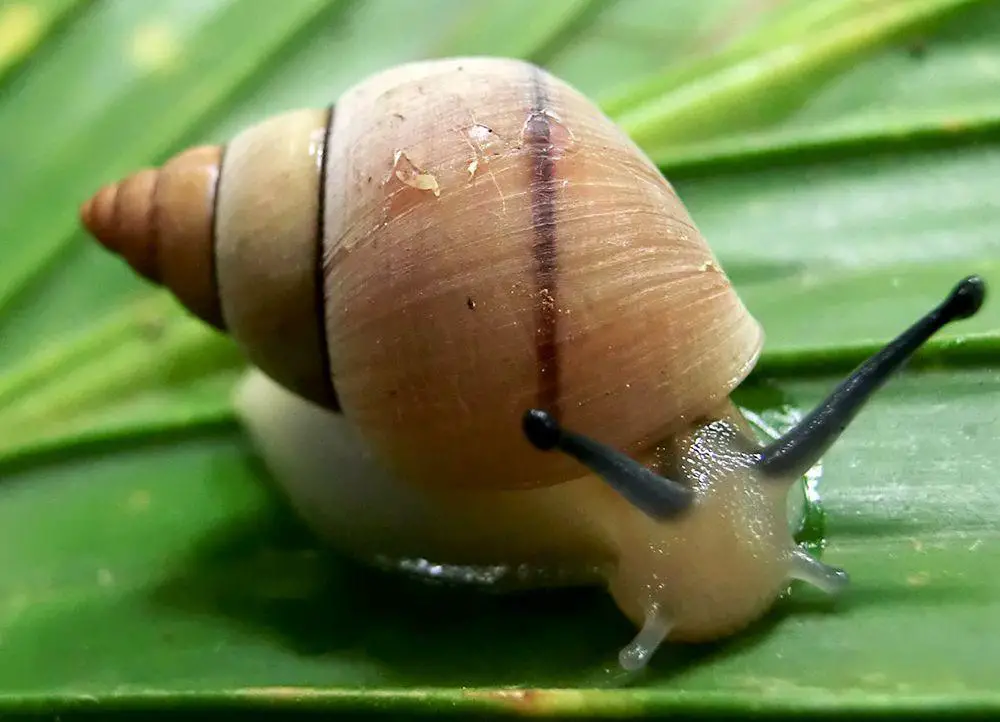
Other endemic animals
- Golden panchax (Pachypanchax playfairi) – the only endemic freshwater fish in Seychelles.
- Seychellum alluaudi – freshwater crab, the only species in genus with the only similar crabs found in East Africa. Lives in mountain streams of Mahé, La Digue, Silhouette and Praslin. It is hard to explain how this species got here.
- Stylodonta studeriana – this snail is found only in Praslin, lives on palm trees.
- Pachnodus praslinus – some 7,000 snails could be surviving in Praslin, mostly in Vallee de Mai.
- Fruit fly Drosophila sechellensis seems to be dependant on coco de mer nuts.
- Most likely here lives jumping spider Baviola braueri.
This list by far is not exhaustive.
References
- The IUCN Red List of Threatened Species. Lodoicea maldivica. Accessed in 13 February 2013.
Vallée de Mai is included in the following article:
 Linked articles
Linked articles
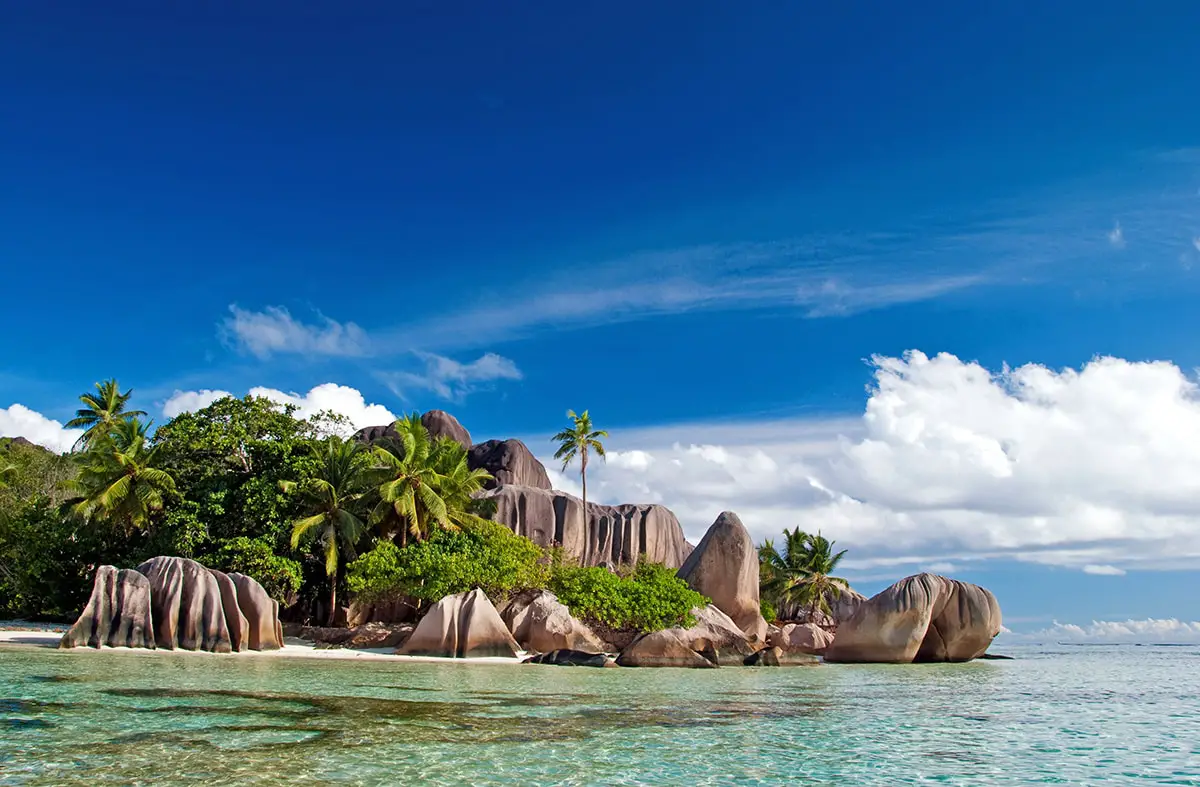
Wonders of Seychelles
Seychelles are certainly unique. Some of these islands consist of granite – these are part of the ancient Gondwana continent, the only mid-oceanic granitic islands in the world.
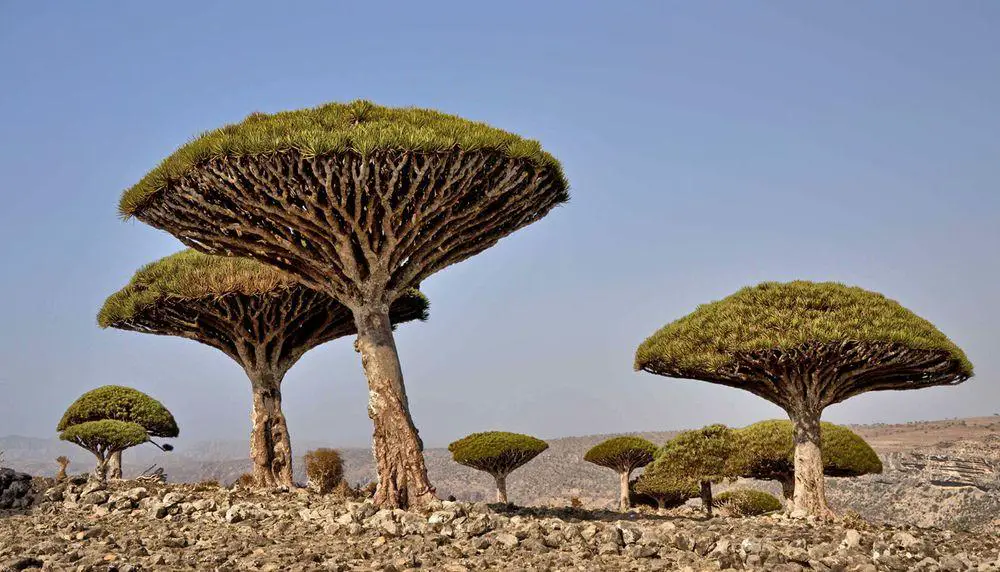
Ecosystems
Biotope is a rather small area with uniform environmental conditions and a specific community of life. Wondermondo describes biotopes and ecosystems which have striking looks, look very beautiful, or have other unusual characteristics.
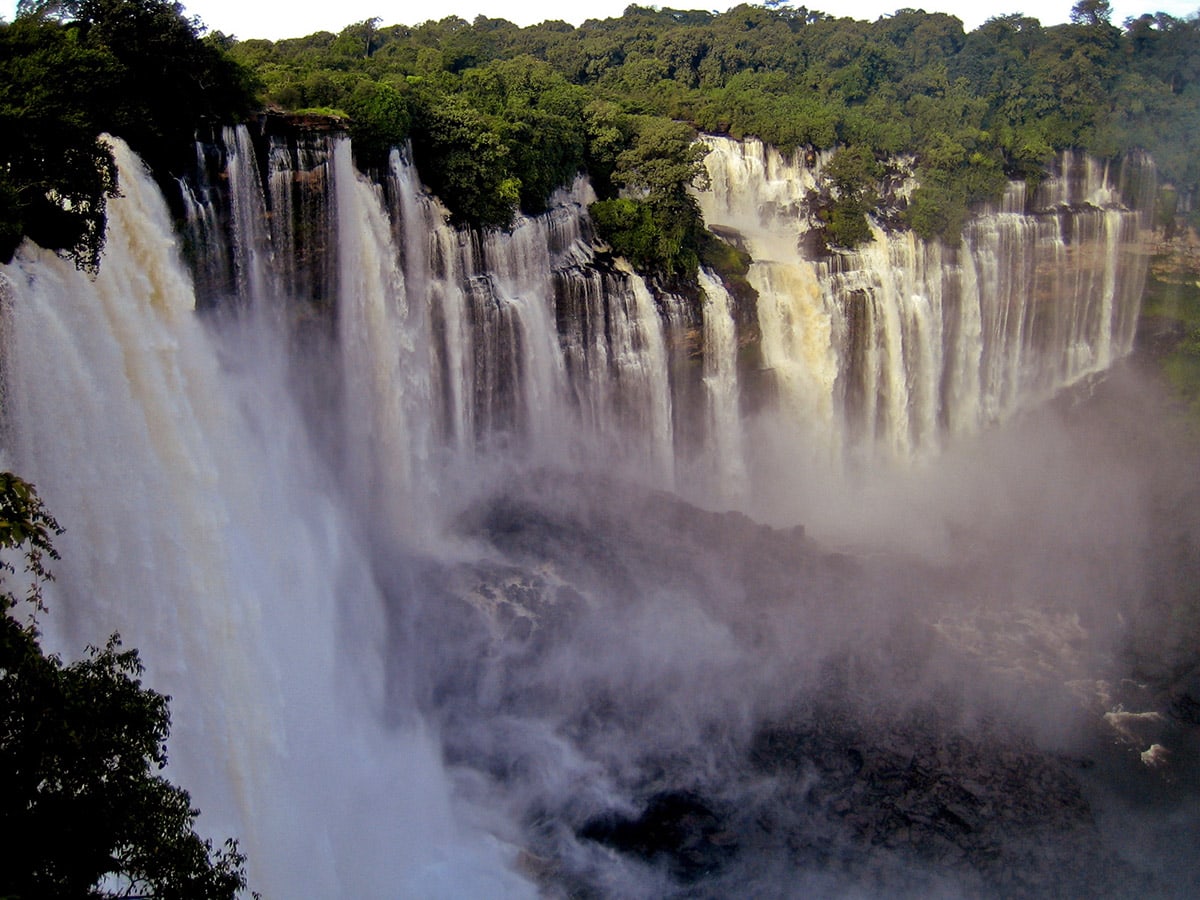
Wonders of Africa
Africa has many outstanding wonders and some of the most surprising ones are the heritage of Egyptian civilization, the vernacular architecture of the Sahel region, tropical ecosystems, and others.
 Recommended books
Recommended books
Seychelles
This new 5th edition of the Bradt guide to Seychelles has been fully updated throughout and remains the only travel guide to offer a comprehensive scientific account of the biodiversity of Seychelles in an easy-to-read format (over 40% of the Seychelles land is under environmental protection).
Insight Guides Pocket Seychelles
Where To Go takes you from Victoria out to the East Coast and the islands. Top 10 Attractions gives a run-down of the best sights to take in on your trip, including Morne Seychellois National Park, the capital Victoria, la Digue, and Bird Island. What To Do is a snapshot of ways to spend your spare time, from watersports and sailing to walking trails and shopping.

